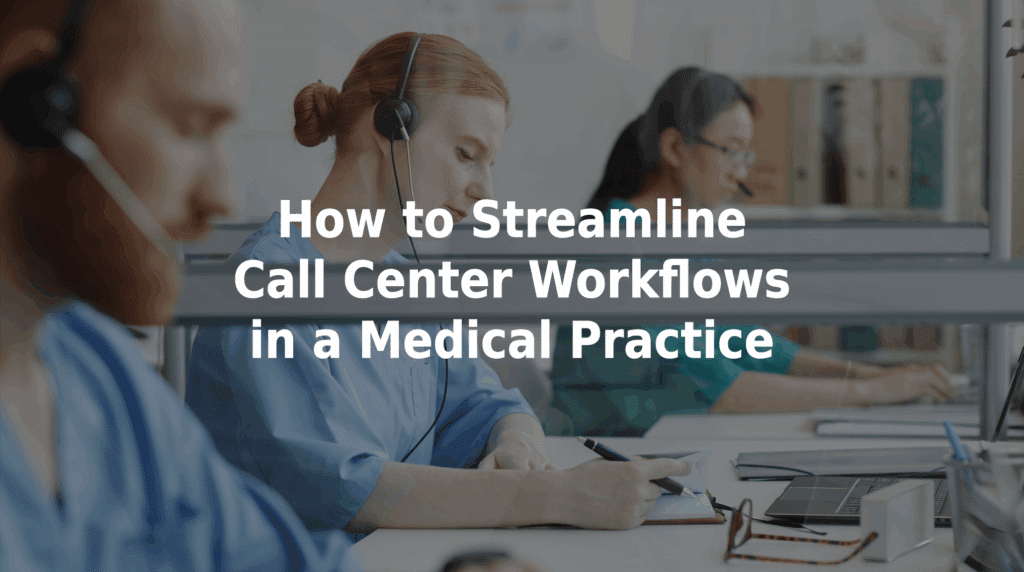How to Streamline Call Center Workflows in a Medical Practice
Efficient communication is the backbone of any medical practice, and that starts with the call center. Whether it’s handling appointment requests, patient questions, or urgent symptoms, how messages are collected and routed can determine the quality and timeliness of care. That’s why learning how to streamline call center workflows in a medical practice is key to reducing errors, improving staff productivity, and enhancing patient satisfaction.
Why Streamlined Call Center Operations Matter
Disorganized call handling creates care delays, confuses clinical teams, and frustrates patients. In contrast, a streamlined workflow improves:
- Response time for urgent concerns.
- Clarity in message documentation.
- Coordination across departments.
- Patient satisfaction and safety.
The cost of miscommunication can be high. One investigation found it led to “$1.7 billion in malpractice costs and almost 2,000 preventable deaths.”
Common Call Center Bottlenecks in Medical Practices
- Redundant or manual message logging.
- Inconsistent intake protocols across operators.
- Lack of clear escalation criteria for urgent calls.
- Overloaded staff leading to delayed documentation.
- Poor integration with EHR systems or clinical staff workflows.
These challenges not only increase operational inefficiencies but can also delay care or cause clinical teams to act on incomplete information.
Best Practices for Streamlining Call Center Workflows
Standardize the Message Intake Process
Use structured templates with required fields to ensure complete and consistent data entry across all staff.
Automate Routine Communication Tasks
Free up staff time by allowing patients to self-report nonurgent concerns or appointment needs through automated tools like MedMessage Automate.
Implement a Unified Message Platform
Avoid miscommunication by ensuring all patient messages, escalations, and clinical handoffs happen within a centralized, secure system.
Train Staff Using Real-World Scenarios
Reinforce intake accuracy and decision-making with practical simulations and feedback.
Real-World Scenario: From Routine Refill to Stroke Alert
A 72-year-old woman called her doctor’s office requesting a refill for vertigo medication. The message was initially treated as nonurgent. Fortunately, a nurse manager reviewed it and called the patient back — only to learn she had also experienced dizziness, headache, and weakness on one side. The nurse advised her to call 911 immediately.
Had the call center workflow relied solely on manual processes, this critical escalation might never have happened. That’s why structured, intelligent intake systems can be lifesaving.
How MedMessage Automate Improves Workflow Efficiency
MedMessage Automate uses AI prompts to help patients enter their symptoms via secure chat. The system guides them when needed to clarify symptoms that could indicate greater urgency. This not only reduces operator workload but ensures 24/7 message intake availability — with consistent quality.
Our solution is designed to boost staff productivity, and help medical practices manage growing patient communication demands without increasing administrative burden.
Transform Your Call Center Into a High-Performance Hub
If your practice is struggling with inefficient call handling or delayed message responses, now is the time to act. Contact us today to talk about a program!

